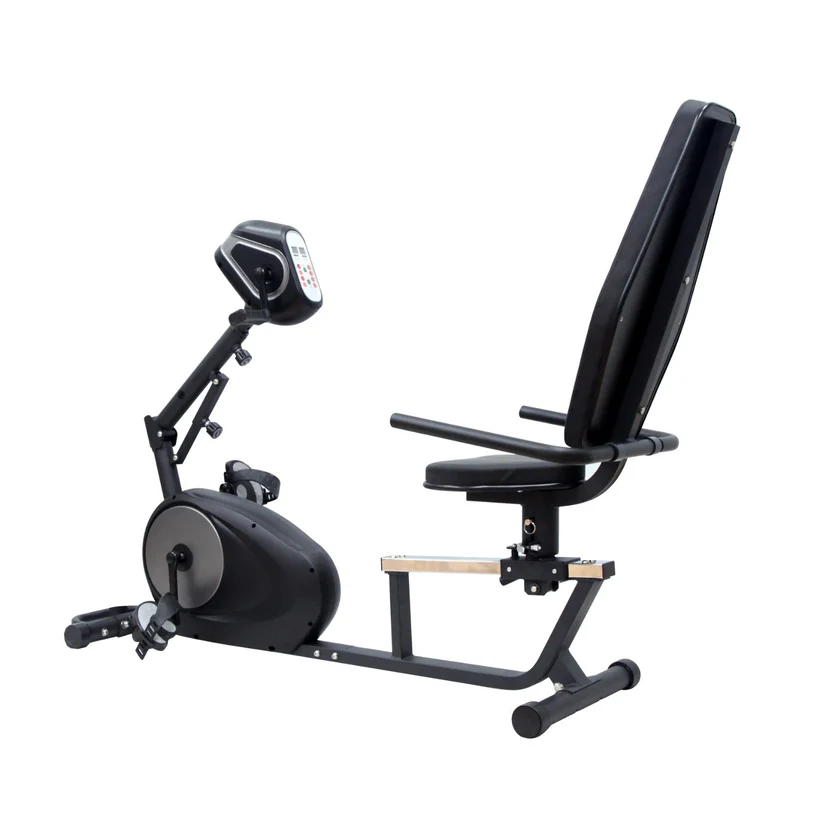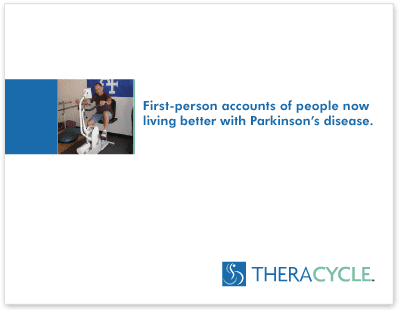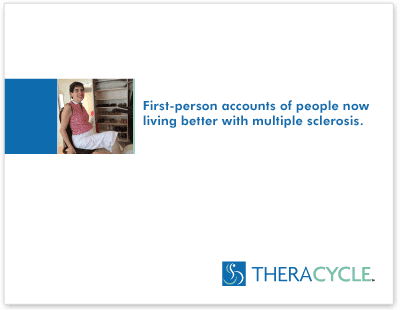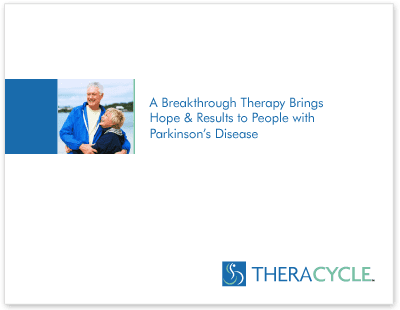- ›
- Conditions
- ›
- Theracycle & Stroke
- ›
- Stroke Treatment with Stroke Therapy Exercises
Exercise Equipment for Stroke Patients
Exercise After a Stroke
Medically reviewed by David Dansereau, MSPT
In the United States, around 700,000 people experience a stroke a year. Out of those 700,000, around a third of them are recurrent strokes. For those who have experienced a stroke, you know how it can reduce your ability to exercise, physically and mentally. Between the physical limitations and the depression that follows, it is easy to cut activity and exercise out of your weekly routine, which can lead to muscle atrophy, osteoporosis, and ruining the circulation to your lower extremities.
Physical activity is the key to preventing and treating stroke and myocardial infarction. To stroke survivors especially, stroke rehab exercises can improve your quality of life by strengthening your muscles, improving your mobility, and gaining your independence once again.
For most stroke survivors, stroke rehab exercise starts at a hospital or stroke rehabilitation facility and includes a variety of sessions and stroke physical therapy exercises dedicated to regaining independence and movement. Studies have shown that regular stroke rehabilitation exercises not only improve mobility and overall well-being, but its impact on lifestyle can also reduce the risk of a future stroke. In addition, studies show that stroke victims who partake in a stroke rehabiliation exercise program achieve better performance levels than those who don’t.
The American Heart Association recommends for overall cardiovascular health that people get at least 30 minutes of moderate-intensity aerobic activity five days per week or 25 minutes of vigorous aerobic activity three days per week. Depending on your abilities, reaching this level may not be possible. Any amount of exercise after a stroke is better than nothing though, so work with your doctor to set a realistic goal and routine for yourself.
Exercise for stroke patients is important for stroke rehabilitation and recovery, however, as with any new exercise routine, it is important to talk to your doctor or another qualified healthcare professional before you begin. If you have any pain or discomfort, or a worsening of your symptoms, stop the stroke exercises immediately and contact your healthcare provider.
Stroke Rehab Exercise Equipment
Physical therapists recommend the motorized Theracycle stroke rehab exercise equipment for stroke patients because it allows for continued safe and effective stroke physical therapy and stroke rehabilitation exercises at home.
Here’s How:
Challenge: Loss of Motor Control
Theracycle Solution: Compared to standard home exercise equipment, our motorized Theracycle stroke therapy bikes are a superior choice for stroke treatment and stroke rehabilitation exercise. The unique motorized technology assists in achieving an exercise regimen even if you have lost motor control in one or both sides of your body or just simply haven’t regained leg strength.
Challenge: Mobility Issues
Theracycle Solution: Choose from the wheelchair-accessible Theracycle 100 or Theracycle 300. The Theracycle 300 provides a 360-degree swivel seat that is ergonomically designed with a low step-through base making it easy for stroke patients to mount and dismount from a wheelchair or walker. With additional support handles, custom foot pedals, and an incredibly stable frame, a Theracycle provides the support and safety you need and the best stroke physical therapy available.
If your doctor has discussed the need for stroke recovery exercises to increase flexibility, energy, and leg strength, consider purchasing a Theracycle to receive similar benefits that other Theracycle users have experienced while exercising during their stroke recovery.
As an exercise physiologist who has been active in the field of sports medicine for over forty years, I strongly recommend the unique and safe characteristics of the Theracycle. The motor driven Theracycle provides for both passive and active exercise patterns under the complete control of the user. Thus, the Theracycle can help the user to attain increased muscle strength, endurance, flexibility, and aerobic capacity.” —Edward Meyers, Ph.D.
Exercise Physiologist
Coral Gables, FL
Challenge: Spasticity
Theracycle Solution: Theracycle’s adaptive pedals provide a safe and secure ride, helping stroke patients who experience spasticity, or the inability to keep their feet securely in a traditional bike’s pedals, to safely pedal the bike. Theracycle’s adaptive pedal options include a sandal design pedal and a more advanced adaptive platform pedal that provide for a safer and more effective stroke rehabiliation exercise versus traditional bikes.
Challenge: Loss of muscle strength and aerobic capacity
Theracycle Solution: The Theracycle semi-recumbent therapy bicycle is ideal for stroke physical therapy and stroke exercises because of the unique and special motor that supports you through your stroke therapy exercises. The motor does the work for you, which helps stroke patients who have lost muscle strength and aerobic capacity. While traditional exercise equipment requires a certain level of strength and endurance, the Theracycle’s unique motor allows you to get the exercise you need regardless of your strength and endurance levels on any given day.
Our stroke customers love their Theracycle. Theracycle is the in-home stroke therapy solution for stroke rehab exercise and stroke physical therapy treatment.
Stroke Recovery Exercises
Aerobic Exercise
After a stroke, it is important to start making aerobic exercise part of your routine. Physical inactivity is a risk factor for stroke, so exercising can help prevent a recurrent stroke. According to the American Heart Association, an analysis of 19 studies found stroke survivors who completed a group-based aerobic exercise program similar to widely available cardiac rehabilitation programs significantly improved their endurance and walking capacity.
Fine Motor Skill Exercises
For those recovering from a stroke, you may notice that finger movement takes more time to recover than your arms and legs. The reasoning for this is because your fingers are farther away from the midline of your body, therefore it takes more work to recover. This is where fine motor skill exercises come in to help the recovery process. According to Flint Rehab, workouts such as therapy ball exercises, therapy putty exercises, stacking pennies, and rubber band resistance are all great ways to accelerate the recovery process for your fingers.
Mobility Exercises
Through exercise, stroke survivors can regain mobility and strength in their bodies. Those with paralysis must take things slow and focus on stimulating neuroplasticity. Neuroplasticity, or brain plasticity, is the mechanism your brain uses to rewire and heal itself after injury. Stimulating neuroplasticity allows your brain to recover lost skills such as walking or moving your arm. Focusing on high repetition exercises can help stimulate neuroplasticity and can help you improve your mobility.
Range of Motion Exercises
When it comes to range of motion exercises, there are two different types, passive and active. Passive range of motion exercises are workouts where you exert no effort in the targeted muscles. Active range of motion exercises on the other hand are workouts that take your joints through part or all of their range of motion. Both of these exercises for stroke patients help reduce spasticity and muscle stiffness. However, while performing these stretches, it is always important to remember to never stretch to the point of pain.
When it comes to stroke therapy, exercise is the key to improving your quality of life. Through stroke exercises, you will be able to strengthen your muscles, improve your mobility, and gain your independence once again. While your rehabilitation process might have started at a hospital or stroke rehabilitation facility, continuing the process at home is easy with Theracycle. Through hard work and consistency, Theracycle stroke rehab exercise equipment allows for continued safe and effective stroke physical therapy and stroke rehabilitation exercises at home.
To learn more about the benefits of Theracycle for stroke patients, check out more in the link below.
« Benefits of the Theracycle Exercise Bicycle for Stroke Patients










